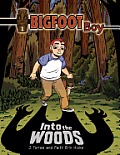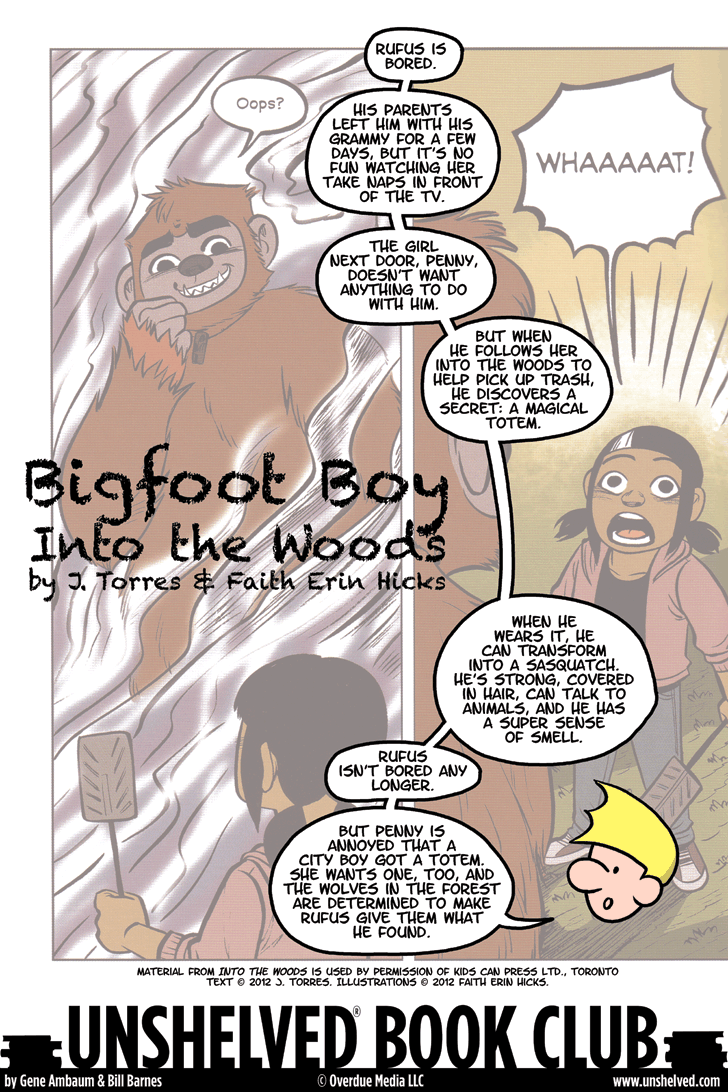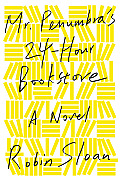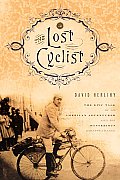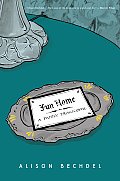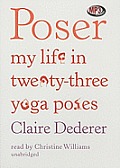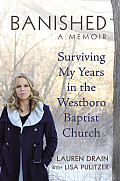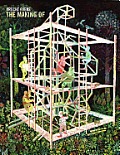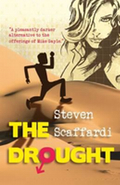Link to this review in the form of a comic strip by geneambaum tagged graphic novel
Link to this review by ang tagged literary
In his new position as night clerk at Mr. Penumbra’s 24-Hour Bookstore, Clay Jannon quickly realizes that there is a second bookstore tucked away within the first. It is a secret library of volumes filled with indecipherable code checked out by a small group of oddball patrons attempting to solve a puzzle. When Clay accidentally solves the first layer of this puzzle, Mr. Penumbra closes the store and vanishes. Clay learns that the store’s owner and eccentric patrons are part of the Unbroken Spine, an organization of scholars working to unlock the hidden truths in ancient texts. Assembling a nerdy adventuring party, Clay sets off across the country on a quest to find and assist the wizardly Penumbra. Clever geeks, digital piracy, old-school typography, book cults, tech gadgets, fantasy novels, and the supreme power of Google all play their parts as the campaign unfolds.
Why I picked it up: This book was a misfit, displayed on a shelf of YA titles where pale, moonlit teens eyed me from behind or below single word titles. This book didn’t belong. The title had too many words. The cover was a simple, yellow and white pattern. I picked it up because I wanted to protect it from the encroaching paranormal horde. I read the first page, just to see if it was worth rescuing. It was effortlessly funny and sly without contorting itself to appear clever. I was hooked.
Why I finished it: Populated by people I wanted to know (the roommate building a miniature city inside an apartment, the director of an obscure knitting museum, a best friend who is equal parts millionaire and dungeon master) and overflowing with my favorite geeky things, this book made me giddy. About a quarter of the way through I desperately wanted it to come to life and be my best friend so that we could spend every minute together discussing books and bookshops, coding and digital rendering, fonts, and friendship.
I’d give it to: Sharon, who would understand that if Mr. Penumbra’s 24-Hour Bookstore was a real brick and mortar shop, it’d be located at the intersection of The Shadow of the Wind Avenue and Ready Player One Boulevard, and that we’d hang out there every day after work.
Link to this review by sarahhunt tagged history
In the 1880s and 1890s, bicycling was a huge fad in the U.S. People joined cycle clubs, raced for speed and endurance, and published magazines. The bicycle improved from year to year. Frank Lenz started out on a high-wheeler then went to a safety, breaking speed and distance records. After two men rode their bikes around the world, Lenz decided to do the same thing in the other direction, but on his own and only taking boats or trains when it was impossible to bike or walk. Halfway through his grueling journey, he disappeared.
Why I picked it up: As crazy as riding your bike around the world would seem today, Lenz did this when telegraphs were brand new. Most of the villages he rode through had never seen someone from another country or even heard of a bicycle. With the added mystery of his disappearance, I was hooked.
Why I finished it: The first half of the book took me on a day-by-day bike trip across the U.S. and Asia with Lenz. Then his friends and family were left to piece together what happened to him on the road between two rural villages in Turkey. The mystery almost became an international incident when it turned out to be tangled up in the Armenian genocide, butt-covering by an incompetent diplomat, and international politics.
I’d give it to: John, for a peek into a world where a letter from an embassy was your visa, and you could have a revolver in your luggage as you travelled from country to country.
Link to this review by geneambaum tagged biography • graphic novel
Bechdel’s memoir of her childhood focuses on her father (and her relationship with him). He was unaffectionate and difficult to communicate with, a father who spent more time worrying about restoring his old house than about his wife or nurturing his children.
During college, Bechdel came out as a lesbian (via a letter) to her family. They didn’t embrace her new identity, and she felt upstaged when her mother told her that her father had had affairs with young men. Her father died soon after, in an accident Bechdel considers a suicide.
Why I picked it up: Zach Weiner described it as “perfect.” Plus he was a giggling fanboy after getting Bechdel to sign a copy of The Essential Dykes To Watch Out For at Comic-Con.
Why I finished it: I loved Bechdel’s attempts to make sense of her father and her past in light of the revelations about his sexuality. Particularly effective were the panels featuring excerpts from her father’s old letters to her mother. (These may be actual images of the correspondence because they’re written in another hand.)
I’d give it to: My sister, K.C., is getting a copy for her birthday this year. Bechdel’s dad was a part-time teacher who also worked in his family’s funeral home (hence the title). K.C. is studying to be a funeral director, and she’s got a gruesome sense of humor, so she’ll love the part when, in the middle of preparing a body for burial, he calls his daughter into the prep room to hand him the scissors.
Note: If this looks familiar, it may be because of this guest strip by Paul Sizer.
Link to this review by billba tagged picture book
An alphabet book about New York’s best borough.
Why I picked it up: I live in Seattle. But I was born in Manhattan and have a big connection with Brooklyn. My mother was born there, and I stay there in my sister’s Grand Army Plaza apartment several times a year when I’m in New York for business. It’s my home away from home.
Why I finished it: The delightful drawings evoked equal parts familiarity and nostalgia. No out-of-towner, I recognized Flatbush Avenue, DUMBO (Down Under the Manhattan Bridge Overpass), and egg creams. I had a pang for the erstwhile Brooklyn Dodgers and their home, Ebbets Field. I was inspired to look up the Mermaid Parade and the Gowanus Canal. This book does, however, mysteriously omit Brooklyn’s most important cultural landmark, The Way Station, which contains a TARDIS. (I can confirm that it’s bigger on the inside.)
I’d give it to: Nora Rawlinson, editor of Early Word who put me up earlier this year when I cleverly forgot the keys to my sister’s apartment. I learned from this book that you can see the Statue of Liberty from her neighborhood, Brooklyn Heights. I’m also giving a copy to my kids, Theo and Rosie. They don’t know it yet, but we’re taking a family trip to New York for BEA next year, and I want them to have a sense of where they’ll be staying. There’s a very inviting map of Prospect Park, where we’ll be spending a fair amount of time.
Link to this review by emilyjones tagged biography • audiobook
A humorous and sometimes self-indulgent glimpse into the author’s life as she enters motherhood, framed by her newfound love of yoga. This audiobook takes listeners on a journey through Seattle in the late 1990’s and beyond as Dederer explores her role as a wife, mother, and daughter. She struggles to find meaning in her life, and yoga plays a significant role in her self-discovery.
Why I picked it up: Kathy, a friend of mine in Rhode Island, recently finished this book and asked me how true-to-life the descriptions of Seattle are. I wouldn’t normally read a book with “yoga” in the title, but since I trust her taste in books (she really liked it), I said I’d give it a listen and let her know.
Why I finished it: It really isn’t all that much about yoga. Yes, there are poses and classes and philosophy is mentioned quite a bit. But I was fascinated by the author’s impressions of Seattle, and how she struggled to be herself and a mom in a city whose inhabitants are so opinionated about other folks’ lifestyle choices. Listening to the rants about mothers wearing Dansko clogs and weekly parent meetings at her daughter’s co-op about snack time had me laughing as I drove around the very neighborhoods she describes. And I really wanted to know, how do you find your own niche in a city where all the niches seem to be already spoken for?
I’d give it to: Tina, who teaches yoga in Boston and is also the mother of two small children. I’d love to know what her least favorite poses are, and I’m very curious as to how the challenges of parenthood in Boston measure up to those in Seattle.
Link to this review by flemtastic tagged nonfiction
Lauren Drain was a normal fifteen-year-old when her father, fresh from filming a documentary on the hateful practices of the Westboro Baptist Church in Kansas, was captivated by their message. He soon moved their family onto “the Block,” the houses directly around this controversial church.
In an attempt to win her father’s approval, Lauren was soon publicly denouncing homosexuals, thanking God for the deaths caused on 9/11, picketing the funeral of Matthew Shepard and of soldiers killed in Afghanistan and Iraq. Even though she was an enthusiastic member of the congregation, her innocent questioning of church policies (which seemed to go against what she was reading in her church-issued King James Bible) and her desire to get married someday (she was told that her focus was not on God and called a whore) made other church members distrust her.
When she began dating a boy at her community college, she was banished from the church, which means her family can have no more contact with her.
Why I picked it up: I once saw Westboro Baptist Church members protesting homosexuality with tasteless, angry signs at an Indigo Girls concert I was attending in Seattle. While I wanted to argue with them, I knew that what they really wanted was attention so I ignored them and went inside. But I’ve always wanted to know more about this controversial church which I’d heard was simply a cult of personality centered around one man, Pastor Fred Phelps. The majority of the church is made up of his relatives and their children.
Why I finished it: Curiously, the church is not looking for converts. They believe in a very strict version of Calvinism, that people are predestined for Heaven or Hell and nothing can be done to change that. So, the church is celebrating God’s hatred for sinners, which, in their view, explains bad things happening to the U.S. (like 9/11). There were lots of details about how the church picks its targets, travels around the country with portfolios of signs custom-made for an event, and scrupulously makes sure to have the proper permits. They have been in court many times, including when a multi-million dollar judgment against them was overturned on appeal by the Supreme Court. They’ve done some strange things, like having high school students from the church picket their school during lunch because it allowed a Gay/Straight Alliance.
I’d give it to: Stan, who would be both aghast and curious about the church’s activities. They are clever in their search for publicity. Years ago they sent blizzards of faxes but have now graduated to social media. They have now made an interactive world map where people can click on a country to see why God hates that particular country.
Link to this review by geneambaum tagged graphic novel • literary
Big city artist Peterson travels to a rural village, Beerpoele, to create work for its biennial. Most of the local participants are impressed with whatever he does. They begin looking to him for critiques and advice. He says they should create one big sculpture to give the show more oomph and cohesion, then leads them in making a giant garden gnome.
Why I picked it up: Weird title. Plus Drawn & Quarterly has published two of my favorite graphic novels this year, Goliath and Jerusalem.
Why I finished it: The book looks unlike any other graphic novel I’ve ever seen. Evens uses translucent watercolors to bring his characters to life. Each is painted with just a color or two, and then the words are lettered in the same color as the character to show who’s speaking (there are no word balloons). Everything is see-through: characters, objects, words, and the scenery often appears a bit surreal. It’s amazing and works flawlessly.
I was a bit worried this was going to be a high-minded meditation on art. But then, after Peterson is shown to his room, he craps in the potty (a bucket) and has a run-in with the cat. It showed me Evens had a real sense of humor about what was going on and that I was going to enjoy the book.
I’d give it to: Sarah would like the dementedly artistic Dennis who paints swirls on everything. (I think he probably uses the library where she works.)
Link to this review by flemtastic tagged humor
Dan, a British twenty-something, has just broken up with his girlfriend of several years. (The incident involved a bat-wielding friend smashing out a window while aiming for his head.) His mates are sure this is a positive step because it frees him up to play the field. But Dan finds himself (and his penis, Little Dan) in a nine-month period during which he cannot get laid no matter how hard he tries. His friends think he’s like a soccer striker. He needs to score a goal to get his confidence back. But hilaroius disasters ensue and he can’t break his streak.
Work is not going any better. Dan’s appearance on TV holding a gay pride sign leads his clueless boss to try to pick him up with a Pythonesque wink, wink, nudge, nudge. His co-worker, Kelly, usually a great sounding board for what women want, gives her notice so that she can go travel the world for a year just as Dan realizes that she’s the girl he really wants to be with.
Why I picked it up: It was described to me as “lad lit” which I took to mean a British, male approximation of chick lit. I decided it was worth a try just because of the new genre. I was also hoping to pick up some new British slang to casually work into conversations with friends, making them think I was more erudite than I actually am.
Why I finished it: The funny scenes. When Dan is clipping his pubic hair with an electric razor because one of his mates said that “shaving his bits would make his penis look bigger,” his cell phone rings, startling him into shaving a bald patch. As a young man, before Dan knows what a tampon is, one of his cousins lets him use one to imitate Hannibal from the A-team, a man known for putting a cigar in his mouth. Dan and his friends mock another man who had an asthma attack during sex, necessitating an inhaler, by calling him Weezy Lover. (They also make up and sing a song to him to the tune of Phil Collins’ “Easy Lover” with altered lyrics.) Dan refers to a masturbation session as meeting “Palmala Handerson.” The laughs kept coming.
I’d give it to: My twin sons, who are in college (but not my high-school-aged son) because they loved the similarly themed (and more innocent) read-alikes when they were younger — Don Calame’s Swim the Fly and Brent Crawford’s Carter Finally Gets It. They’ll learn new terminology and euphemisms, too.
